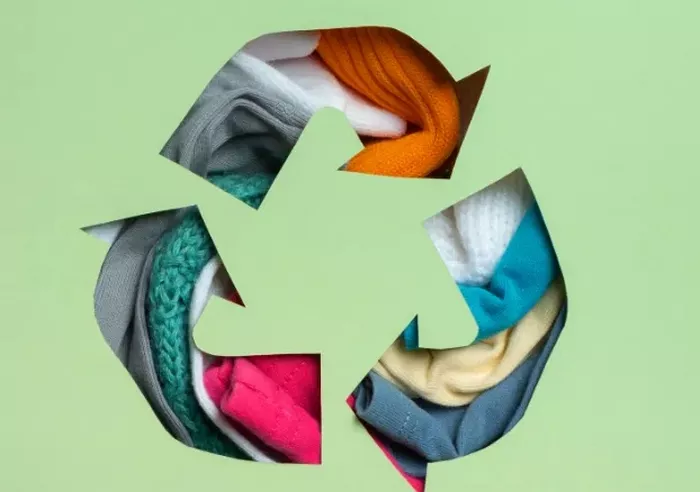London Fashion Week, one of the “big four” global fashion events, has arrived this month, showcasing five days of catwalk shows and creative happenings across the city. Renowned fashion houses and emerging designers will present their latest collections, with the media spotlighting the trends.
For the first time, the British Fashion Council (BFC), which organizes the event, has introduced sustainability requirements for brands participating in Newgen (the platform for emerging designers). These guidelines, adapted from Copenhagen Fashion Week, now form part of the application process for potential participants. Designers must have an approved sustainability strategy, pledge not to destroy unsold clothing and samples, and ensure that at least 60% of their collection is made from certified or preferred materials, deadstock fabrics, and excludes fur, wild animal skins, and feathers.
While this is a positive step for the fashion industry, the question remains: do these measures go far enough?
The statistics on fashion waste are alarming. Every year, millions of garments are discarded, many of which have been worn fewer than ten times. But the environmental impact of fashion extends far beyond waste. Textile production is water and pesticide-intensive, especially for cotton. Many synthetic fabrics are derived from petrochemicals, and most are non-biodegradable, ending up in landfills or polluting oceans as microplastics. Furthermore, toxic chemicals are often used in dyeing and color fixation.
To address the unsustainable pace of “fast fashion” and foster a culture of recycling, innovation in technology will likely be key. Approaches targeting raw materials, such as greener cotton production, biodegradable polymers, and new textile recycling methods, show significant promise for reshaping the industry.
Now, let’s turn our focus to Cambridge. Known for its academic excellence and technological contributions, the region is also home to companies making strides in sustainable fashion technology, particularly in color solutions.
One such company is Colorifix, based in Norwich and Cambridge. Colorifix has garnered attention for its innovative approach to dyeing, winning multiple awards for its technology. The company uses engineered microorganisms to directly color materials, eliminating the need for toxic pigments, dyes, fixers, and solvents. Their process begins by identifying the DNA responsible for natural color in plants, then engineering bacteria to produce the color. Customers receive freeze-dried bacteria and grow them in a fermenter to the required scale. The bacteria are then used to dye textiles in standard dyeing equipment. After heating, the bacteria’s cell membranes burst, releasing the color onto the fabric. With a strong patent portfolio dating back to 2015, Colorifix appears poised for future growth.
Another notable Cambridge company, Sparxell, focuses on the raw material of sequins. Instead of using traditional metallized plastic (PET or PVC), Sparxell produces eco-friendly sequins from plant-based cellulose. Their inspiration comes from the Pollia condensata fruit, which exhibits vibrant blue-purple colors due to the specific arrangement of cellulose in its cell walls. By mimicking these natural structures, Sparxell has created a line of colorful products for fashion and other applications. The company filed its first patent in 2021 and now holds a growing portfolio of pending applications.
Additionally, Pact Earth (formerly Hide Biotech), another Cambridge-based company, is developing a biomaterial called Oval, made from marine collagen. Oval replicates the feel of leather without using animal products. Though still in its early stages, Pact Earth’s technology has already been covered in a published PCT application, and the “bio-leather” sector has seen a significant increase in patent filings. In 2023, 49 applications were filed, and the number is expected to rise to 64 in 2024.
These companies have wisely sought intellectual property protection for their innovations, with each developing a growing portfolio of patents. For example, Pact Earth has successfully trademarked the name “Oval” but encountered opposition when trying to register “PACT” in the U.S. This highlights the importance of thorough trademark clearance, as the company may need to consider a new name moving forward.
While these innovative companies may not be featured at London Fashion Week, where the spotlight is on designers who use their technologies, it will be interesting to see how much attention sustainability gets in the media coverage. Events like London Fashion Week offer a unique platform to raise awareness about sustainability challenges within the industry. It’s encouraging that the event is trialling sustainability requirements, and one can hope that in the future, there might even be a fashion show showcasing collections made from patent-protected, sustainable materials.
Related Topics
- London Fashion Week Fall Winter 2025: Key Moments to Remember
- Florence Pugh Stuns in Sheer Black Hooded Dress on the Runway at Harris Reed’s London Fashion Week Show
- Crystal Kung Minkoff Opens Up About ‘Cathartic’ Reunion With Lisa Rinna at Paris Fashion Week

